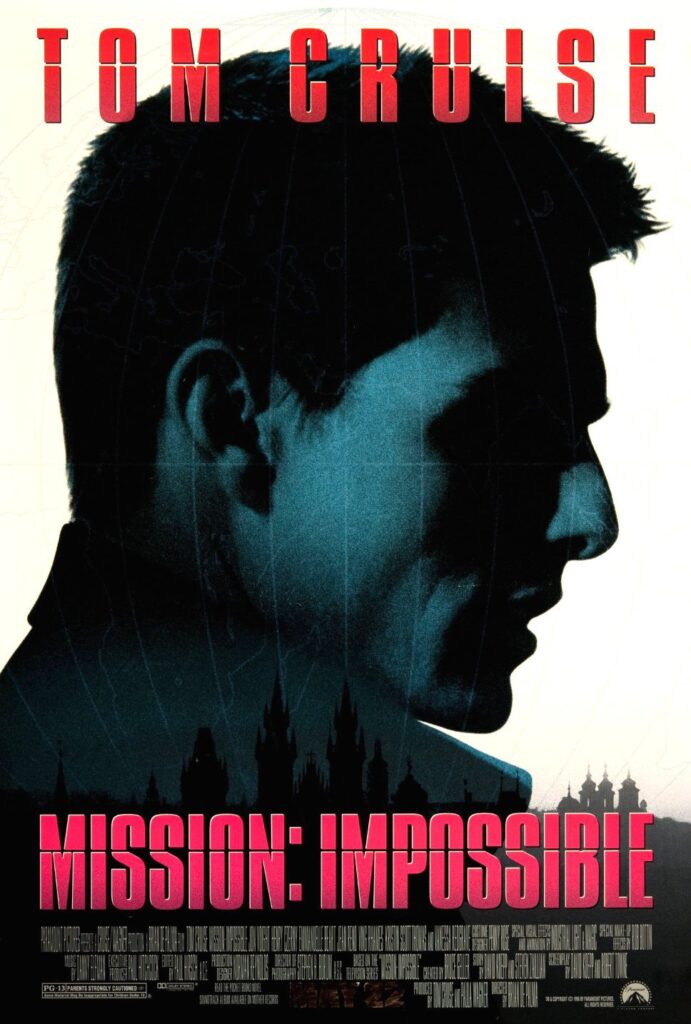
Welcome back to the Tom Cruise Cinema Club. I recently returned with the whole family to watch the Brian de Palma-helmed, curiously punctuated Mission: Impossible for the first time since seeing it on its theatrical release, and found a few surprises.
One: the internet. Wow, it’s easy to forget how recently the internet became omnipresent. 1996 doesn’t sound like very long ago, but the internet in this film is Triassic. Clunky big laptops. Such ostentatious use of ‘E-Mail’ it’s almost capitalised, with a little animation to illustrate a message being packaged up in an ‘envelope’ and ‘posted’. Tom even needs Usenet to contact the criminal underground. Usenet! Fantastic.
Two: there’s only one scene in the whole film. I know, that’s not exactly true, but there’s a reason why the overriding mental picture most people retain of the movie is Tom Cruise suspended in the air on a cable in a white vault. The film is built around a series of set pieces but the only one that really works is that CIA heist. Who can remember the others? Exploding chewing gum on a fish tank, a chase with a helicopter in a train tunnel, they’re all fine but they don’t stick in the memory like the highly contrived but entertaining ceiling-dangling-computer-hack. The film looks like that was the primary scene that anyone thought of and the rest of the picture was built around leading up to it or following the repercussions.

Three: that one scene is terrific. The stakes are clear, the obstacles obvious, the timing immaculate, the execution highly accomplished. De Palma is shooting his own mini Rififi here. There is very little dialogue because very little is needed. And because only a tiny amount of the plan has been explained beforehand there are plenty of surprises and reversals to maintain the tension. We cringed and held our breath and ooh’ed and ahh’ed as we watched, just like we should. Great fun.
So I guess the take home message is that you CAN build a multi-sequel, twenty-eight-year-spanning film series out of a single scene, as long as that scene is good enough. Maybe we writers should be putting more effort into single outstanding scenes and not worrying about the surrounding 110 minute stories after all…?
